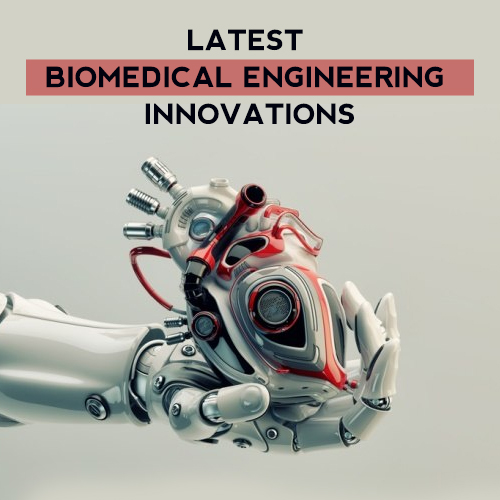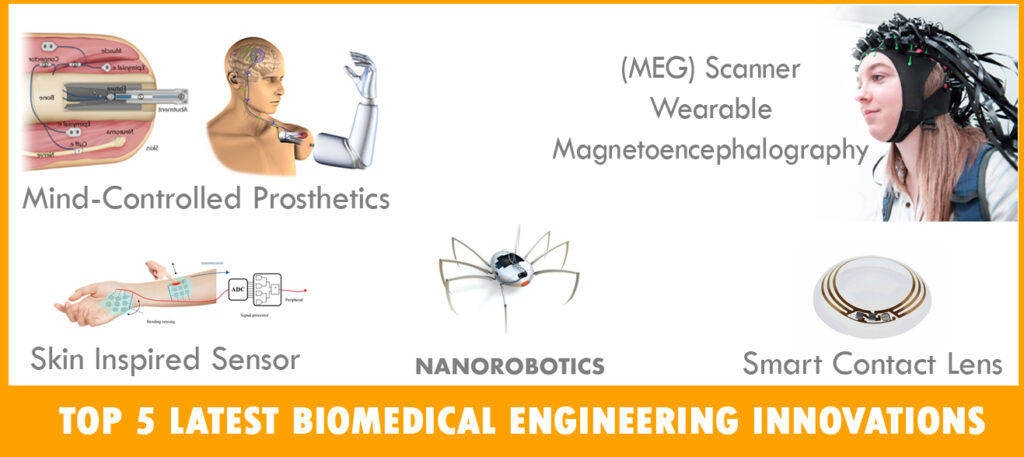
TOP 5 LATEST BIOMEDICAL ENGINEERING INNOVATIONS

TOP 5 LATEST BIOMEDICAL ENGINEERING INNOVATIONS
GRE/GMAT and Life Lessons
1 . Being in the moment
Being present in the moment is a virtue that is necessary in life and when taking the GRE. We must concentrate on the current issue in the same manner that we must concentrate on the present in life. We cannot concentrate too much on the preceding question; if we do, we risk wasting valuable time that may be used on the subsequent questions. Similarly, we squander too much time in life when we dwell in the past rather than living in the present.
2 . Strategy
To answer the questions, we must think critically and employ strategies. To solve problems efficiently and quickly, we frequently have to look beyond the box. Isn’t it true that the same holds true in life? When we are confronted with an issue, we frequently feel stuck. However, if we develop the art of detaching ourselves from difficulties and viewing them from a new perspective, we may be able to devise some inventive techniques and solutions to problems that are far more successful.
3 . Effectively manage stress and anxietyÂ
On the test, just as in life, we must successfully manage stress and anxiety. A little tension and anxiety may be beneficial to keep us awake rather than passive, but too much may drive us over the edge and spoil the soup. This test teaches us how to successfully deal with stress and anxiety.
4 . Strategic planningÂ
Effective planning will be required to prepare for this test. An effective score will take you places, just as efficient planning will take you places in life. There’s no need to keep studying and memorizing words on the fly. Make a good plan and carry it out.
5 . ImplementationÂ
The exam forces us to think about and apply what we’ve learned in school. In life, we must frequently use what we learn; otherwise, the knowledge remains in us and ferments and rots. Are we putting what we’ve learned in life into practice on a daily basis? Isn’t it something to think about? If you do not use your skills, they will rust and you will lose confidence in what was previously second nature to you.
6 . Avoid making assumptions
The test frequently traps us if we make incorrect assumptions. We must remain vigilant and avoid making any assumptions. Isn’t this also true in our lives? How frequently do we make assumptions about people or situations that turn out to be incorrect? We see the world through tinted lenses. The world seems green if the lens is green. However, we can learn from the test to avoid making assumptions and instead observe things as they are.
TOP BIOMEDICAL INNOVATIONS
Innovative medical technology is created using complicated engineering principles and design paradigms
in the highly interdisciplinary field of biomedical engineering. It focuses on finding solutions to medical
issues by conducting in-depth analysis to improve medical technology. Through the innovation
spectrum, game-changing concepts are becoming a reality and improving health care. Here are a few
recent advancements in biomedical engineering that will have a significant impact on the field’s future.
1)Mind-Controlled Prosthetics
A significant portion of the global population cannot use their limbs because of an accident, disease,
congenital condition, or amputation. Researchers have created prosthetic limbs that can be controlled
by the human brain thanks to developments in neuroscience and robotics. This technique uses brain-
computer interfaces to connect prosthetics directly to the neurological system of humans. By implanting
an array of 128 electrodes over the area of the brain that regulates hand and arm movements,
researchers at John Hopkins University have just created a prosthetic with the potential to control the
fingers of the amputee using their minds. In order to cause the electrical signals to move the matching
fingers, the prosthetic has been built by taking into account the motor and sensory data. For this
technology to be commercially successful and help amputees regain finer hand function, considerably
more brain mapping and computer programming is required.
2)CRISPR-Cas9 Gene Editing:
Genome editing, commonly referred to as gene editing, is a group of scientific methods that allow the DNA of an organism to be changed. These techniques enable the insertion, deletion, or modification of genetic material at specific genomic regions. There are numerous techniques that have been developed for genome editing. One well-known instance is CRISPR-Cas9, which stands for clustered regularly interspaced short palindromic repeats and CRISPR-associated protein 9. The CRISPR-Cas9 system has generated a lot of attention in the scientific community since it is faster, less expensive, more accurate, and more potent than current genome editing approaches.
3)3D Bioprinting:
With the use of bio-inks and additive manufacturing, living cells are printed in layers to create structures that mimic the behavior and composition of actual tissues. The materials used in bioprinting, known as bio-inks, can be either natural or synthetic biomaterials that can be combined with living cells. The fields of tissue engineering, bioengineering, and materials science are the most common biological applications for 3D bioprinting. Additionally, the technology is increasingly being used for drug research and approval. The present focus of bioprinting research is on clinical applications including 3D-printed skin and bone grafts, implants, and even complete organs.
4)AI and Machine Learning in Healthcare:
One of the most significant industries in the greater big data ecosystem is healthcare because of the critical role it plays in a prosperous, productive society. The application of AI in the healthcare sector truly has the potential to save or kill patients. AI can help healthcare professionals with everyday tasks, including doctors, nurses, and other healthcare providers. AI in healthcare can improve overall patient outcomes, preventative care, and quality of life in addition to offering more precise treatment and diagnostic modalities. Artificial intelligence (AI) can assist in predicting and observing the emergence of contagious diseases by analyzing data from the public sector, the healthcare business, and other sources. Therefore, AI has the potential to play a significant role in the global public health initiative in the battle against pandemics and epidemics.
5)Nanobots
A 3D-printed nanoscale robot that can move about the body and tackle diseases has been developed by researchers. The nanobot, which ranges in size from 0.1 to 10 micrometers, is a tough, affordable gadget made of biocompatible materials. It functions as little surgical components for replacing all intracellular structures or repairing damaged cells. Since nanomedicine has the potential to replace pacemakers by directly treating the heart’s cells, it has transformed the practice of medicine. A patient’s body can be implanted with nanobots to give the sick areas easy access. When these bioengineered robots were tested on mouse tumors, they demonstrated the ability to precisely deliver modest therapeutic doses.
Researchers are concentrating on nanorobots that could replace standard chemotherapy medications
since they attack both diseased and healthy cells.
It’s essential to stay up-to-date with the latest advancements in the field, as biomedical engineering is
continually evolving and making new breakthroughs. Always consult recent literature, research papers,
and news sources for the most current information.
Let us help you to fulfill your Study abroad dreams.



